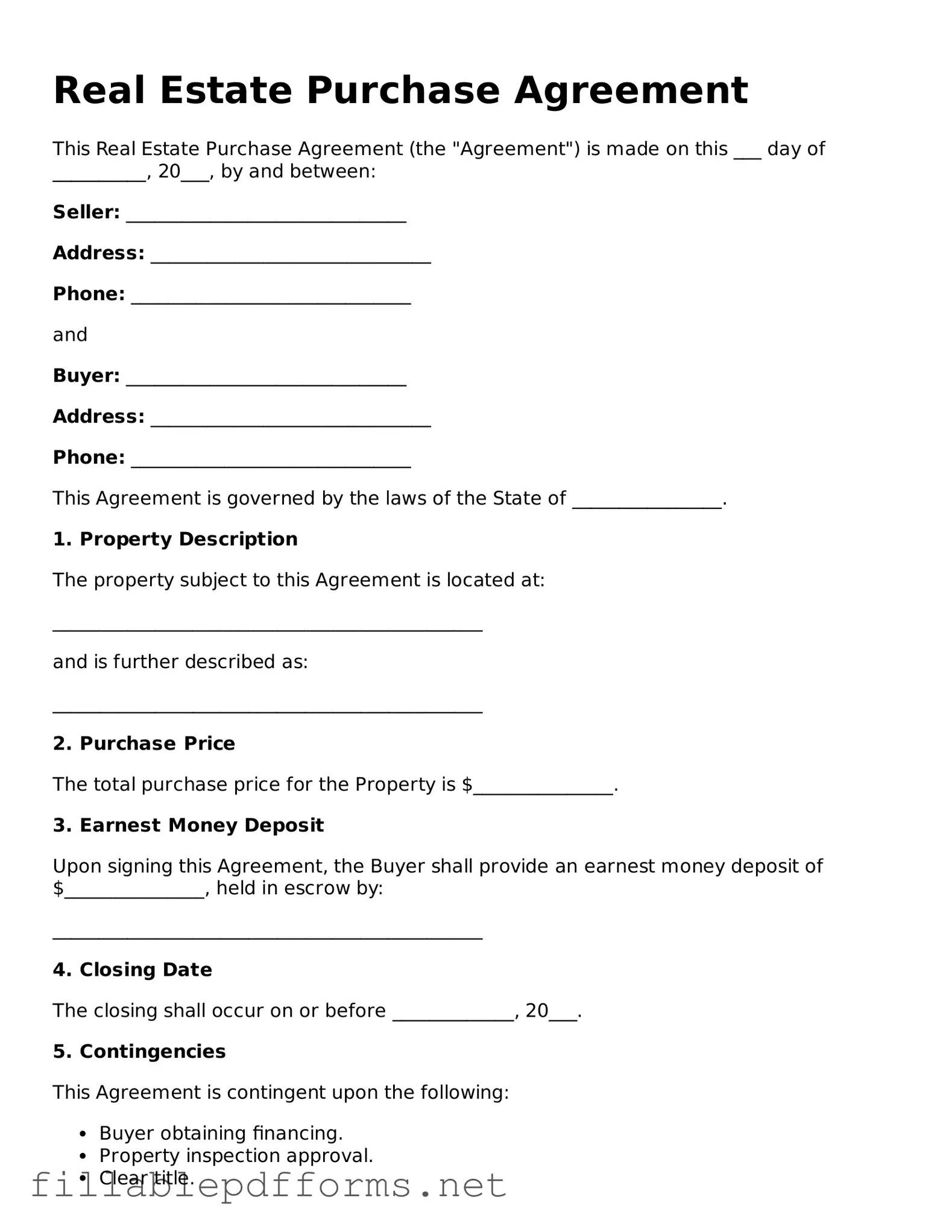Blank Real Estate Purchase Agreement Template
A Real Estate Purchase Agreement is a legally binding document that outlines the terms and conditions of a real estate transaction between a buyer and a seller. This form serves as a roadmap for the sale, detailing the price, property description, and any contingencies that must be met. Understanding this agreement is crucial for both parties to ensure a smooth transfer of property ownership.
Launch Editor Here
